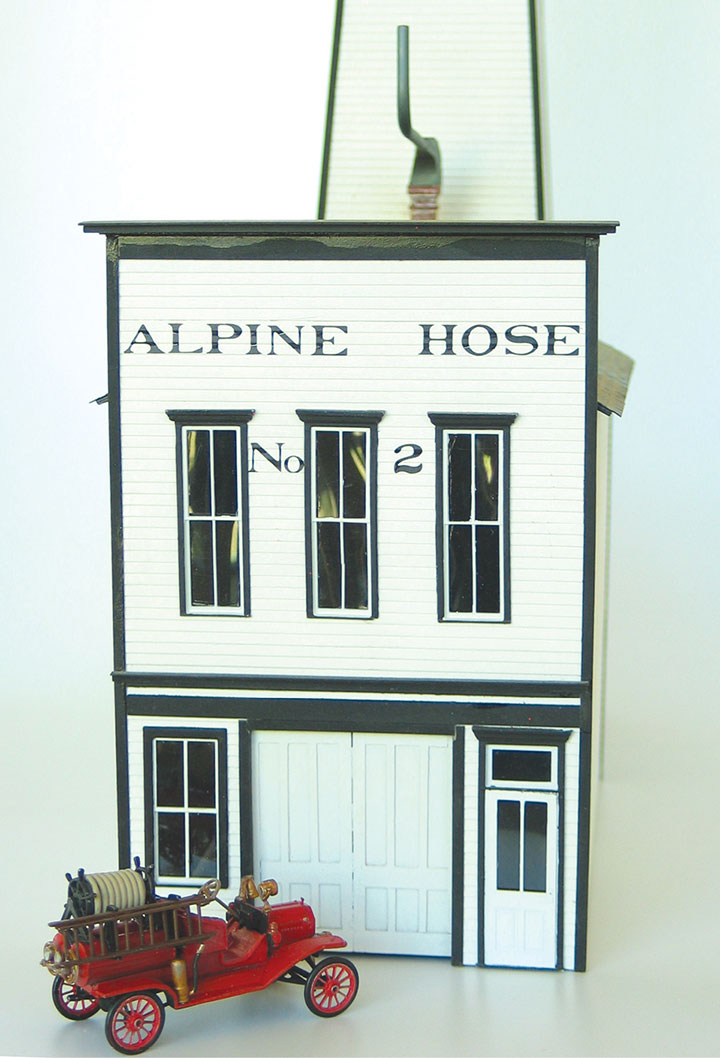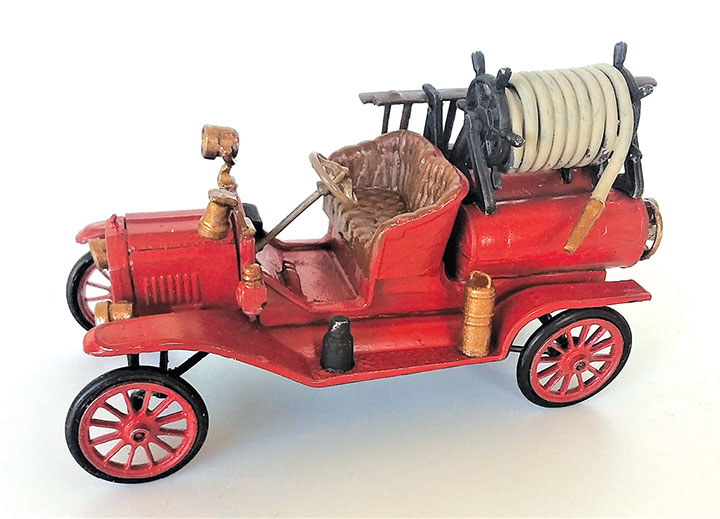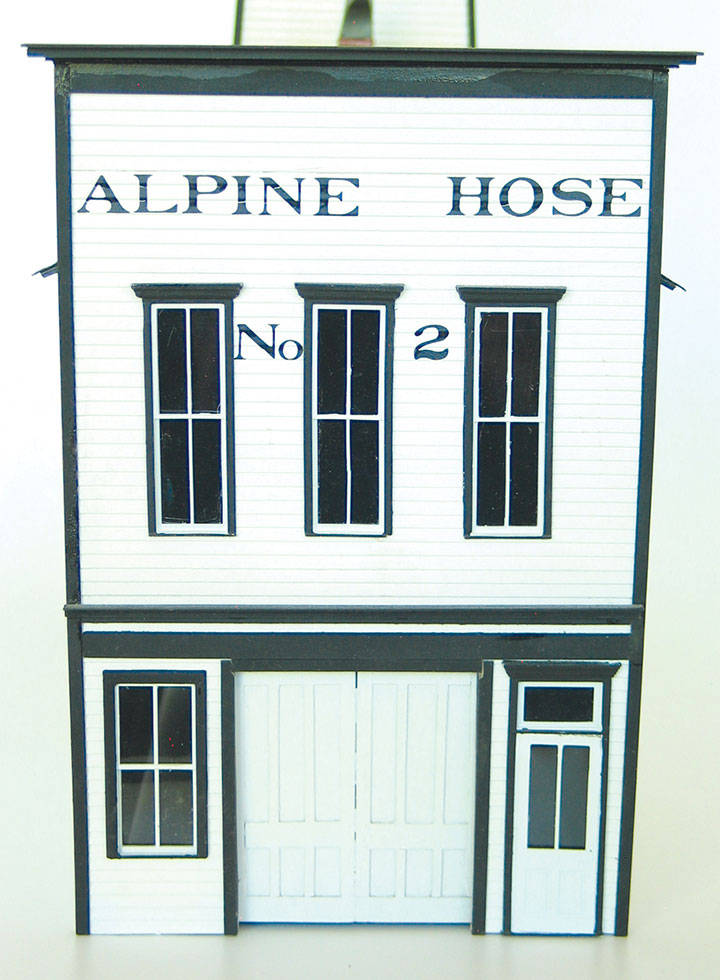Fire was a constant threat to the many wood buildings in early Colorado boom towns. Because of this, the firehouse became the most important building in town. Georgetown was no exception, but it had several firehouses and avoided the major fires which almost destroyed other towns.
One of the most unusual firehouses in Georgetown was the Alpine Hose #2. It was a basic utilitarian structure until a local mining magnate donated a bell, and a tower was built to support it. This addition completely changed the look of the building, making it one of the town’s most interesting structures.
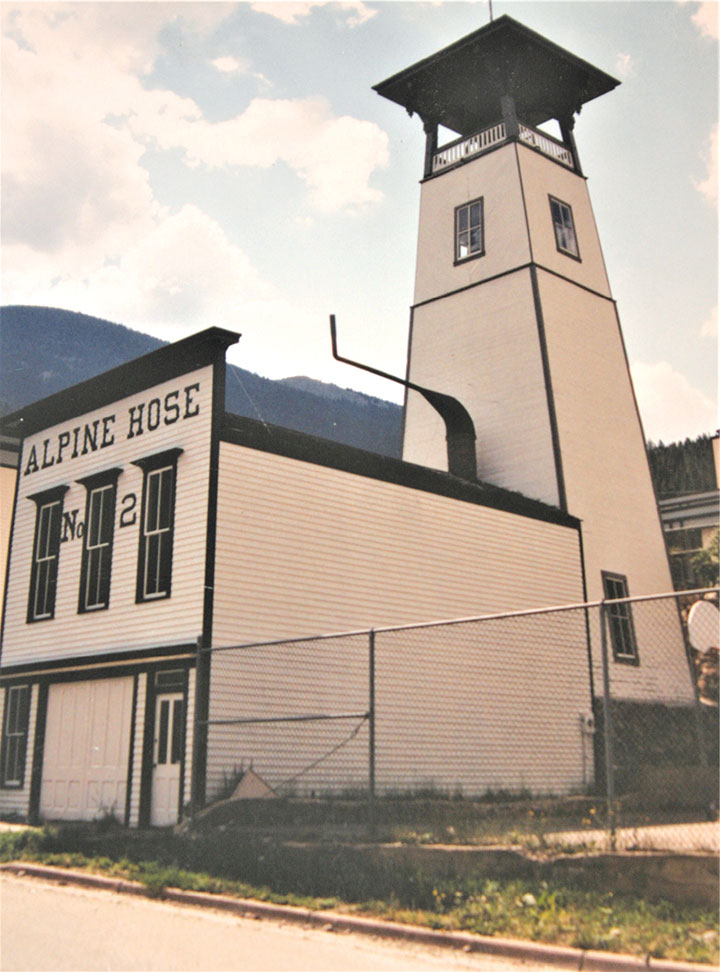
I first became aware of the firehouse when I modeled Colorado narrow gauge in HOn3. I found plans for it and intended to model the building, but switched to On3 and filed the plans for future use.
Because I want to concentrate mostly on mountain scenery, I only have one town on my On3 Colorado Central & Southern layout. But I knew I had to model Alpine Hose #2. I enlarged the HO plans to O Scale and started construction. I tried to locate the man who drew the plans all those years ago so I could reproduce them for this article but was unsuccessful.
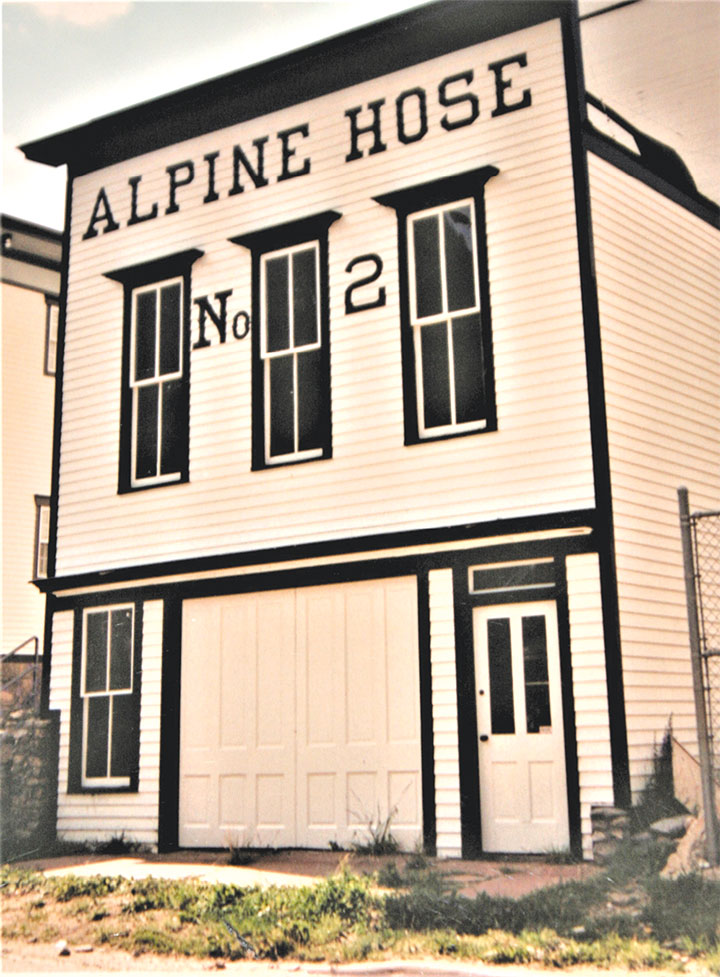
I used Northeastern scribed siding for the entire structure and braced the interior to prevent warping. Grandt Line door and window castings were also used, although some of the window castings were modified to resemble the prototype more closely. I have an ongoing problem with thin wood warping, and I worried the thin main doors would be affected. So, I cut a piece of .032-inch brass sheet to the size of both doors in a closed position, then glued wood strips on it to represent the door panels and trim. This might seem excessive, but the doors certainly won’t warp.
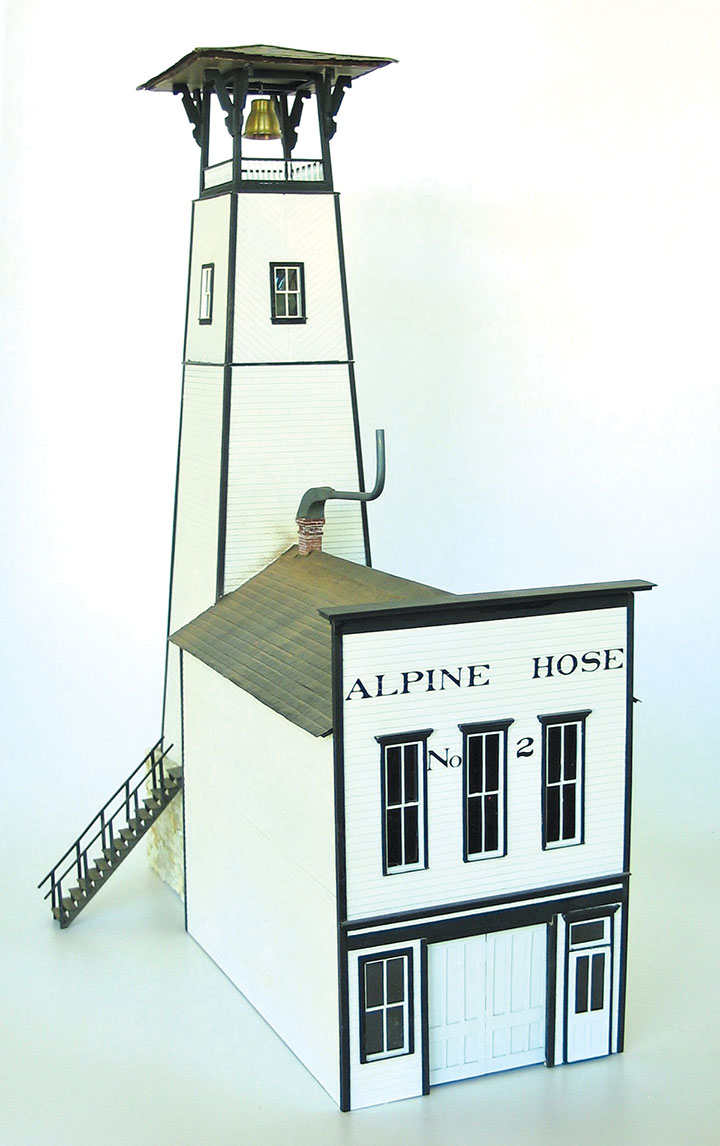
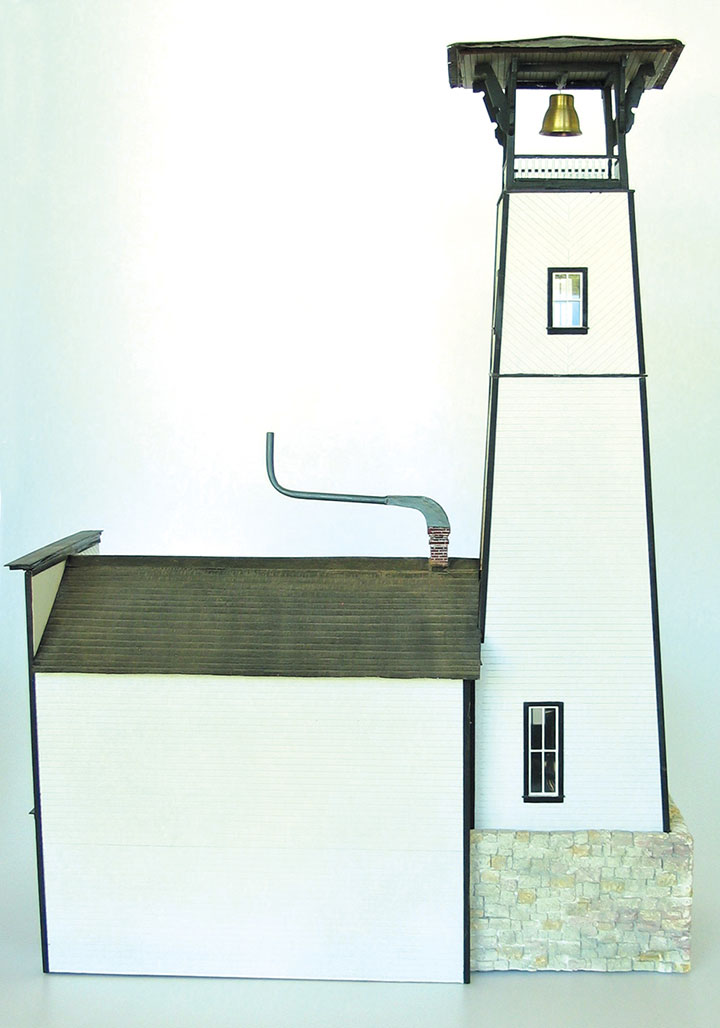
The bell tower was the most time-consuming part of the project. The bottom section is regular scribed siding, but the upper part has diagonal siding at an angle to each other and had to line up correctly to look right. The tower roof had the same style of angled siding, although it only shows on the underside. Grandt Line castings were used for the railings.

Even with a telephoto lens I couldn’t get a good photo of the actual bell, so I had to guess at its shape. I turned brass rod in my Sherline lathe to a shape and size I thought looked like a bell. I hadn’t intended to hollow it out because the bottom wouldn’t be seen when it was hung in position. But I decided to see if I could open the interior, using a boring bar and finishing with mounted stones in my motor tool. I used calipers to keep checking the wall thickness and, much to my surprise, the bell will produce a small “ding” when struck. I decided to quit while I was ahead and didn’t try to make a clapper. The actual bell tower was used to hang wet canvas hoses to dry.

I constructed the unusual stovepipe extension on the chimney with brass sheet and tubing soldered together and glued to a Grandt Line chimney. I used Grandt Line shingles on both the main building and the bell tower roofs. I painted them black to resemble the prototype more closely, rather than staining them.
As I was photographing the prototype building, I was struck by the fact that it’s virtually unchanged since it was built more than 100 years ago. It’s no longer used as a firehouse, but it certainly could be. This makes it an ideal building that can be modeled in any era. I can go from the 1800s to the 1900s just by changing the fire-fighting equipment parked in front of the building, as shown in the photos.
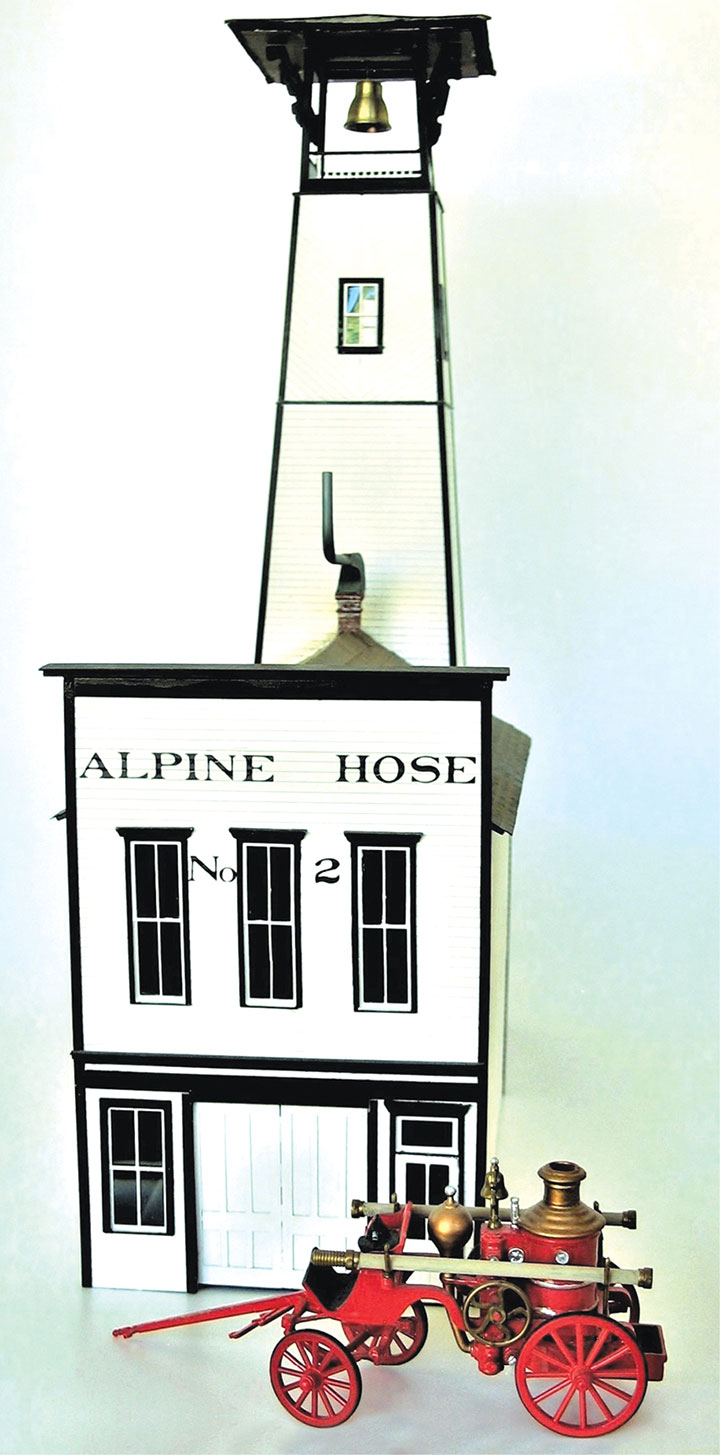
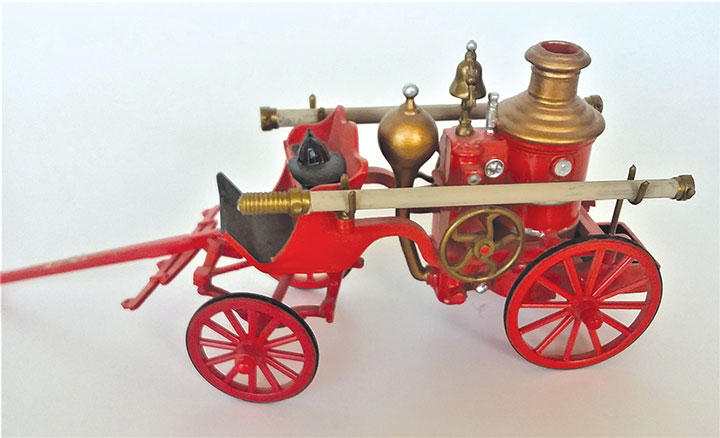
Georgetown is a fun place to visit, having a variety of shops and restaurants, with the Georgetown Loop Railroad a major attraction for railfans. The town center, with its many original wood buildings, especially the iconic Alpine Hose #2, is a must-see for the modeler interested in authentic architecture from such a fascinating era.
